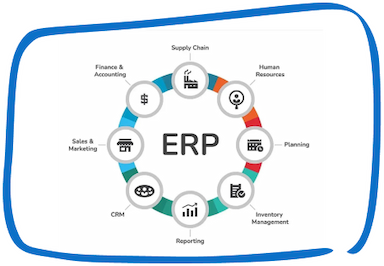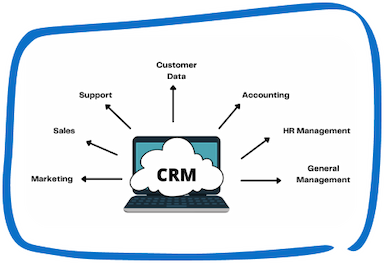Artificial Intelligence (AI) and Machine Learning (ML) are changing how businesses handle many tasks, including tracking employee attendance. Traditional time attendance systems often have problems with accuracy and can be misused. Using AI and ML in-time attendance software offers a better solution.
In this article let us see:
- How AI and ML Improve Attendance Tracking
- Advantages of AI and ML in Time Attendance Software
- Facial Recognition Technology
- Benefits of AI-Based Time Attendance Systems
- The Evolution of Time Attendance Software with AI and Machine Learning
- Future Trends in AI-Powered Time Attendance Systems
How AI and ML Improve Attendance Tracking
AI and ML can study past attendance records to predict future patterns. They can spot trends and unusual events in the data, giving employers useful information. For example, these systems can identify who is often late, predict when people might be absent, and notice possible time theft. AI can even look at outside factors like traffic or weather that might affect attendance.
Smart Attendance Tracking
Reduce administrative tasks and enhance accuracy with a modern time attendance system. Easily monitor shifts, breaks, and overtime.
Advantages of AI and ML in Time Attendance Software
Using AI and ML in time attendance systems has several benefits:
- Better Accuracy:
- More Efficient:
- Helpful Insights:
- Increased Security:
Facial Recognition Technology
Embedded in most of the AI-based time attendance systems facial recognition technology is the core basic component. Individuals are photographed using cameras and that system utilizes advanced artificial intelligence geography to detect and validate individuals according to their face recognition. This technology is a huge improvement over the previous simple attendance punching machines.
Data Collection
Once an individual is recognized, the system records attendance data instantly. This information can include entry and exit times, along with other relevant details, making it a comprehensive time attendance software solution.
Machine Learning Algorithms
The system continuously improves its accuracy over time through machine learning algorithms. It can adapt to changes in appearance, such as new hairstyles or glasses, ensuring reliable identification. This adaptability is a key feature of modern attendance biometric systems.
Integration with Existing Systems
AI-based time attendance systems can seamlessly integrate with other organizational systems, such as payroll and HR software, creating a streamlined and automated process.
Benefits of AI-Based Time Attendance Systems
The implementation of AI-based attendance systems presents many benefits for any organization irrespective of its size. Let’s delve into the major ones:
- Accuracy and Reliability
The foremost of them all is usually the accuracy of the AI-based attendance systems. More so, surveillance methods and press card swipes are subjective and easily faked. On the other hand, AI systems draw biometric features like the faces of users to enhance confidence in identification.
- Time and Cost Savings
Bureaus and agencies that track human attendance using AI-based time attendance systems have little or no use for their time and human resources. This means that the organization is able to cut costs as there are lesser number of resources that are needed to make sure that the attendance records are kept in order.
Moreover, the fact that the system is integrated and fast reduces the administrative costs, and the human resource staff can attend to more productive issues.
- Improved Safety and Security
Every organization values safety and security as one of the most important factors, and Ai Ai-based time attendance system will introduce safety features with the time attendance. The use of biometric data means that only a few people can mark an attendance in such systems. This limits such almost inevitable over-reliance on the risk of impersonation and counterfeiting making these systems very useful in difficult situations.
Accurate Time Attendance Made Simple
Track employee attendance effortlessly and improve accountability with a user-friendly, automated solution designed for all industries.
Consider the case of a Dubai-based healthcare institution that introduced an AI-based time attendance system that incorporates face recognition for the safety of its sensitive zones. The system used facial recognition technology that controlled access allowing only those with appropriate clearance to ensure the privacy of patients and the safety of information.
- Timely Information and Analysis
Time attendance machine powered by Artificial Intelligence incorporate functionalities that provide data and analytics in real-time which make it possible for organizations to operate intelligently.
The system reports can provide a breakdown of trends in attendance, and tardiness, as well as uncover the underlying issues of absenteeism which would enable the management to act before such problems escalate.
- Enhanced Employee Experience
AI-enabled time attendance systems do contribute positively to the general experience of the employees in that they have made the process of marking attendance easier. Employees do not have to carry physical cards or even memorize any PINs. All they have to do is walk in and the system records their attendance with the help of their faces.
Imagine an Indian corporate office in Dubai where an AI face recognition system is installed for recording employee attendance. Employees applaud
The Evolution of Time Attendance Software with AI and Machine Learning
Time attendance systems are changing fast, thanks to AI and machine learning. A study by Market Research Future predicts the global market for these systems will grow 10.3% yearly from 2019 to 2024. This growth comes from more businesses using AI to track work hours better.
Facial recognition is a big trend in time attendance software. Grand View Research expects this part of the market to grow over 20% each year. This technology makes clocking in and out easier and stops time theft. It's part of a bigger move towards more accurate and automatic time tracking.
As companies seek better ways to manage attendance, AI and machine learning are becoming key to the future of time attendance systems.
Future Trends in AI-Powered Time Attendance Systems
As technology advances, AI-based time attendance systems are set to become more sophisticated and integrated. Here are a few upcoming trends:
- Wearable Device Integration
Future time attendance systems may work with devices like smartwatches for even more accurate and smooth attendance tracking. These wearables can gather extra data, such as heart rate and movement, to improve how the system identifies people.
- Smarter Insights from AI
Advanced AI will provide a deeper understanding of attendance patterns and employee behavior. Companies will be able to predict when people might be absent, spot potential issues early, and take action to improve attendance before problems grow.
- Stronger Security Features
Future AI-based time attendance systems will have better security, like multi-step verification and constant monitoring. This will further reduce the risk of unauthorized access and dishonest activities.
Wrapping Up
Offering an AI-based time attendance system is an innovation in attendance management. This is possible through the use of facial recognition, machine learning, and data analysis, which provides superior effectiveness, precision, and security.
Organizations that use AI-based time attendance systems can benefit from:
- Less administrative work
- A better experience for employees
- Valuable insights into attendance patterns
The advancement of technology has very positive implications for attendance management and hints at the invention of far better solutions. There is no question that adopting an AI-based time attendance system is a good move for any contemporary organization. It is clear that the current systems integrating AI and ML will be more collaborative in the future and the extent of their employment in time attendance systems will also widen, improving management of workforces.
Speak with Our Team!
4.9 Stars
1k+ reviews on






